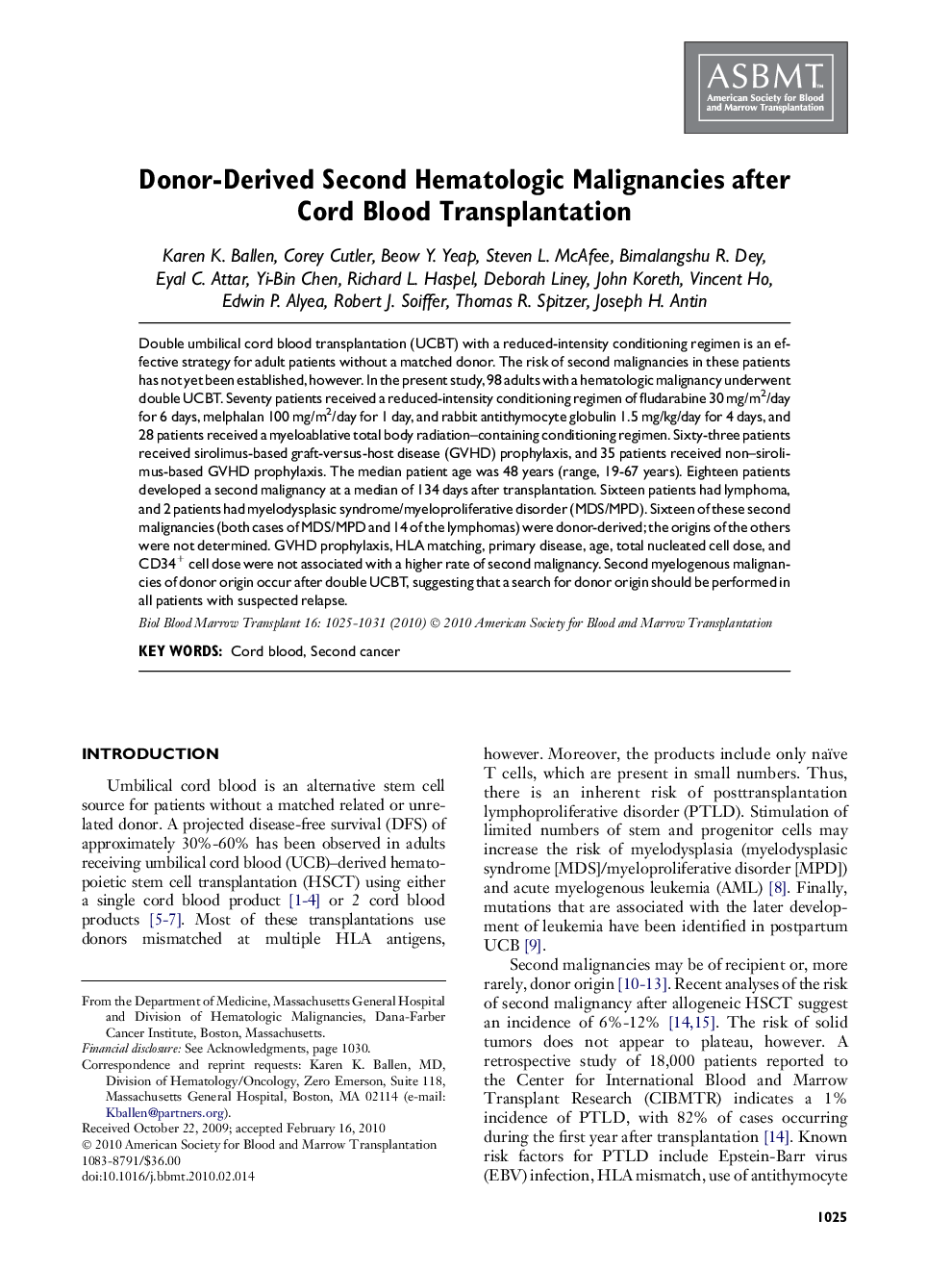| کد مقاله | کد نشریه | سال انتشار | مقاله انگلیسی | نسخه تمام متن |
|---|---|---|---|---|
| 2104235 | 1546333 | 2010 | 7 صفحه PDF | دانلود رایگان |

Double umbilical cord blood transplantation (UCBT) with a reduced-intensity conditioning regimen is an effective strategy for adult patients without a matched donor. The risk of second malignancies in these patients has not yet been established, however. In the present study, 98 adults with a hematologic malignancy underwent double UCBT. Seventy patients received a reduced-intensity conditioning regimen of fludarabine 30 mg/m2/day for 6 days, melphalan 100 mg/m2/day for 1 day, and rabbit antithymocyte globulin 1.5 mg/kg/day for 4 days, and 28 patients received a myeloablative total body radiation–containing conditioning regimen. Sixty-three patients received sirolimus-based graft-versus-host disease (GVHD) prophylaxis, and 35 patients received non–sirolimus-based GVHD prophylaxis. The median patient age was 48 years (range, 19-67 years). Eighteen patients developed a second malignancy at a median of 134 days after transplantation. Sixteen patients had lymphoma, and 2 patients had myelodysplasic syndrome/myeloproliferative disorder (MDS/MPD). Sixteen of these second malignancies (both cases of MDS/MPD and 14 of the lymphomas) were donor-derived; the origins of the others were not determined. GVHD prophylaxis, HLA matching, primary disease, age, total nucleated cell dose, and CD34+ cell dose were not associated with a higher rate of second malignancy. Second myelogenous malignancies of donor origin occur after double UCBT, suggesting that a search for donor origin should be performed in all patients with suspected relapse.
Journal: - Volume 16, Issue 7, July 2010, Pages 1025–1031